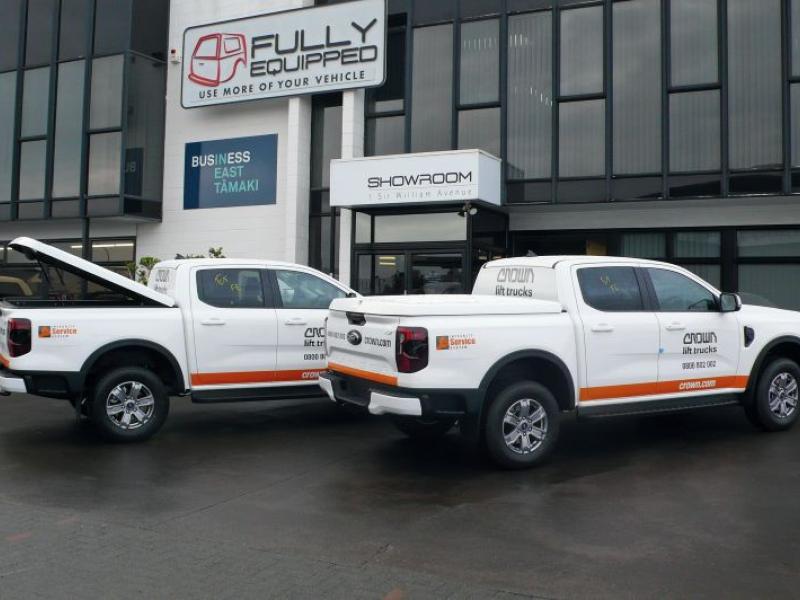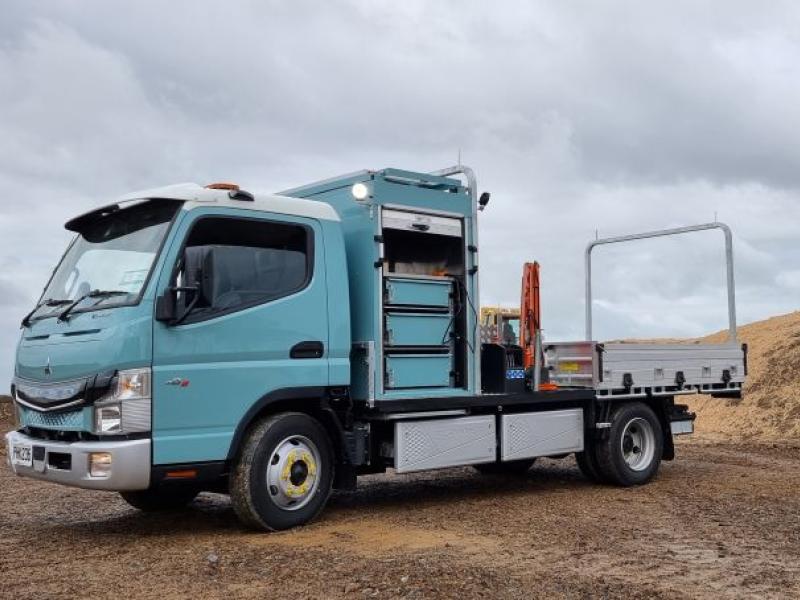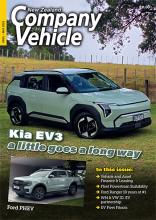Robert Barry goes back to basics and discusses the pros and cons of the many options available to fleets when financing or leasing a fleet.
There are two major advantages to leasing fleet vehicles, one being the protection of capital which can be invested or used elsewhere within the company and the second is the reasonable assumption that monthly fleet costs will be contained to more or less the amount quoted by the leasing company.
However the major disadvantage to leasing is that should a vehicle become surplus to requirements for any reason within the three or four year lease period early termination fees will apply. More details on early termination information from three leasing providers can be found in the Q & A section which follows at the end of this editorial.
Within the leasing arena the two most common options are a finance only lease, (or non-maintained operating lease) where the maintenance and repair costs of the vehicle are fully borne by the leasee or a fully-maintained operating lease, where the leasor calculates the servicing and running costs of the vehicle into the monthly fee.
There are also hybrid leases where a client can elect to have a service plan attached to a finance lease (sometimes a replacement set of tyres will be part of a hybrid lease) and on some fully maintained operating leases customers can choose to take the option of prepaid comprehensive insurance and also fuel.
While the option of paying everything up front sounds attractive from the perspective of projected cash flow, locking yourself into a fixed fuel price for up to three years might not be advantageous given the current volatility of the energy market. If fuel prices go up you might well be on a winner but if they fall you may not.
Here at Adrenalin Publishing we run a Mazda2 pool car on a finance only lease basis because our annual mileage is quite low, and happily the Mazda comes with three years of scheduled servicing in its retail price.
This is an ideal situation for our needs because we are a small company and if there were any issues with the Mazda we could take care of them internally using the time of our office administrator.
However for many medium to large fleet operators this is not an option in terms of opportunity cost and productivity lost. Tying staff up in hours of administration outside their area of expertise is a waste of time and profits. For that size of fleet having the back-up of a fleet management company at its disposal to take care of service, repairs and accident management is money well spent.
BUT! And it’s a big but for a reason – employing a fleet management company does not mean that fleet operators should abdicate their responsibility for ensuring that their leased vehicles are run in the most cost-effective and efficient manner.
Any fleet operator needs to ensure it receives good exception reporting from its provider and that administrators are actively monitoring costs and the mileage travelled by the fleet.
Recently we heard of a case of a vehicle that was returned at 18 months but had travelled more than 2/3 of the original mileage allowance and naturally the leasing provider charged an excess mileage fee as part of the termination wash up process.
If your mileage exceeds the annual figure quoted in the original agreement then you are best to notify the leasor and renegotiate your monthly payments accordingly rather than face an excess mileage fee at termination.
In larger fleets of 50 to 500 units it may be advisable to transfer like-for-like vehicles internally between employees if possible to ensure that mileage does not exceed the amount calculated in the original lease agreement.
It would also pay for larger fleet operators to consider building a small percentage for the cost of refurbishment into their lease agreements rather than end up with a nasty rectification bill at the end of the lease term when the vehicle is returned.
In summary the best way to treat any lease product is exactly the same as buying a house or any other major capital asset – read the fine print. Make sure that you are fully conversant with the terms and conditions regarding early return, rectification costs, and any other incidental charges.
Finance options:
Outside of leasing a vehicle the other finance options include going to a bank for a motor vehicle mortgage, hire purchase through a reputable finance company, and self funding the company fleet from cash reserves or perhaps a mixture of all three.
Here the company accountant or financial controller should work out the best solution to meet the company’s fleet needs but also ensure that it’s fiscally advantageous.
Buying the fleet up front may seem at first enormously draining on company capital but the biggest advantage of owning over leasing is that any surplus vehicles can be sold at any time which gives flexibility and also gives the fleet operator more direct control over the cost structure.
As an independent fleet manager pointed out to us, the revenue stream of fully maintained leases over non-maintained can become quickly evident to the really canny operators. Some fleets may contribute funds to a lease that they may not necessarily get the use of. In his opinion it was better to take a non-maintained lease and pay on actual costs or simply just buy the fleet outright.
If the fleet is managed properly by the operator this particular fleet manager felt it was better to retain funds in the company rather than paying out unnecessarily.
Another independent fleet management consultant contacted by NZ Company Vehicle for comment on the leasing versus owning scenario was of the opinion that small to medium enterprises (SME) would also find it more cost effective to purchase vehicles outright.
In this consultant’s opinion it is often better for SME fleet operators to buy their vehicle fleet and dispose of them between 24 and 36 months.
The consultant pointed out that the amount of stock of reasonably new NZ new vehicles is not so great in the current market and therefore trade-in prices will reflect that on 24 to 36 month old vehicles.
"No New Zealand distributor gets stuck with rental buy-backs in the current market," he says. "Ex-rentals between 12 and 18 months old are currently being snapped up by used-car traders. "In my opinion 20 to 24 months is the best time to sell a vehicle and replace it because it will still have one year’s manufacturer warranty left, and also at that age the bulk of the depreciation has occurred.
"Thinking outside the norm may benefit fleet operators in the long term and allow them to benefit from the shortage of good used vehicles."
Q & A with our advertisers:
1) Which type of lease is more preferred in the current market by non-maintained or fully maintained?
Custom Fleet: The majority of our customers choose a fully maintained operating lease, the benefits of this include:
• Leverage the buying power of 30,000 vehicles
• Ease of budgeting with fixed monthly costs, meaning spikes in spend on vehicle related costs are avoided
• The benefit of locking in costs at today’s rates on items like servicing and tyres and avoiding any future price rises
• Greatly reduced maintenance risk
• A completely outsourced solution with the ability to tailor packages to include products such as accident management, relief vehicles and fuel cards that are all managed in-house
Orix:
While ORIX offer a range of flexible lease and fleet management options, the large majority of clients choose the fully maintained operating lease package. This includes full vehicle servicing, unscheduled mechanical maintenance and repairs, replacement tyres, registration and WOF, unlimited replacement vehicle provision, a 24/7 accident management breakdown and repair management service, and fleet management reporting via the online customer centre. Options such as insurance, fuel cards, RUC’s and infringement management are available additions to this product.
Toyota Financial Services:
2) Of the vehicles under management - what percentage are fully maintained operating leases?
Fully maintained is the most popular as we found that our customers like the idea of not having the extra worry of sorting out maintenance.The fully maintained lease option includes tyres, servicing, roadside assistance, annual registration, and fleet reporting. Optional extras include: Insurance, accident management, fuel card and infringement management.
Custom Fleet:
Almost 70 percent are fully maintained. A further 13 percent of customers choose to combine a non maintained lease with a fleet management service which allows customers to leverage off our buying power and use a recharge facility to pay for any charges as they occur.
Orix:
Of our total pool of vehicles under management, 96 percent are on an operating lease, with around 62 percent these operating lease vehicles being under a fully maintained lease package.
Toyota Financial Services:
2) With non maintained leases - are clients able to buy a service package or a set of tyres?
Approximately 90 percent of the current vehicles under management are fully maintained.
Custom Fleet:
Customers are provided with a recharge facility for all maintenance and service related expenses (including tyres, windscreens, batteries etc). This option allows customers to leverage the extensive buying power of Custom Fleet for these products and services. Our fleet service representatives ensure only appropriate maintenance and servicing is performed to set guidelines, ensuring vehicle reliability and driver safety. This means that all of the benefits of a fully maintained lease are able to be unbundled (including relief vehicles and accident management services) and recharged at Custom Fleet’s pre-negotiated rates providing savings to a company’s bottom line. This service also gives our customers the ability to utilise our market leading fleet reporting suite - so they know where costs are tracking, and our staff utilise them to implement savings and efficiencies.
ORIX:
We have a flexible, tailored approach to our clients’ specific fleet maintenance requirements and our customers are free to select or modify individual portions of the fully maintained package at the quoting stage including nominating a ‘service only’ maintenance package, or stipulating a set number and/or type of replacement tyres. For those clients that elect to opt-out of a maintenance package altogether, ORIX does allow for one-off purchases and additions to a maintenance plan on a case by case basis.
Toyota Financial Services:
3) If a client decides to terminate a lease early, say within the first twelve months, what are the charges for doing so?
TFS can tailor the maintenance plan to suit a customer’s specific and individual needs. Clients can buy service plans with or with out tyres to suit their requirements.
Custom Fleet:
If a customer finds themselves in the situation whereby they need to terminate their lease of a vehicle early, a rental adjustment is charged based on a percentage of the remaining lease instalments (which varies depending on the vehicle type, structure of the loan and the remaining term). We understand that customers often need to terminate leases earlier in challenging times so seek to assist by exploring alternative options (eg, possibly assigning to another customer) to help alleviate any charge.
Orix:
Breaking a vehicle lease early will result in an Early Termination fee, calculated in relation the vehicles current book value, market value, current km, and time remaining on lease. The ET Fee is not a penalty, but rather intended to compensate ORIX for the inherent financial loss when disposing of a vehicle early, in simple terms covering the gap between what the vehicle owes the ORIX versus what the vehicle is now actually worth. Due to the non-linear nature of vehicle depreciation, this variance is most pronounced during the first few years of the lease and ORIX often works with clients to recommend alternative courses of action to minimize the impact of an unexpected early return.
Toyota Financial Services:
There may be termination charges, as the lease is a fixed term contract and the lease rate has been calculated with this in mind. The charges do vary as we try to reduce the cost to the customer by trying to relocate the asset within our existing customer base. Due to our size we have historically been successful at locating assets from one customer to another thus reducing the termination charges if any in some cases.






